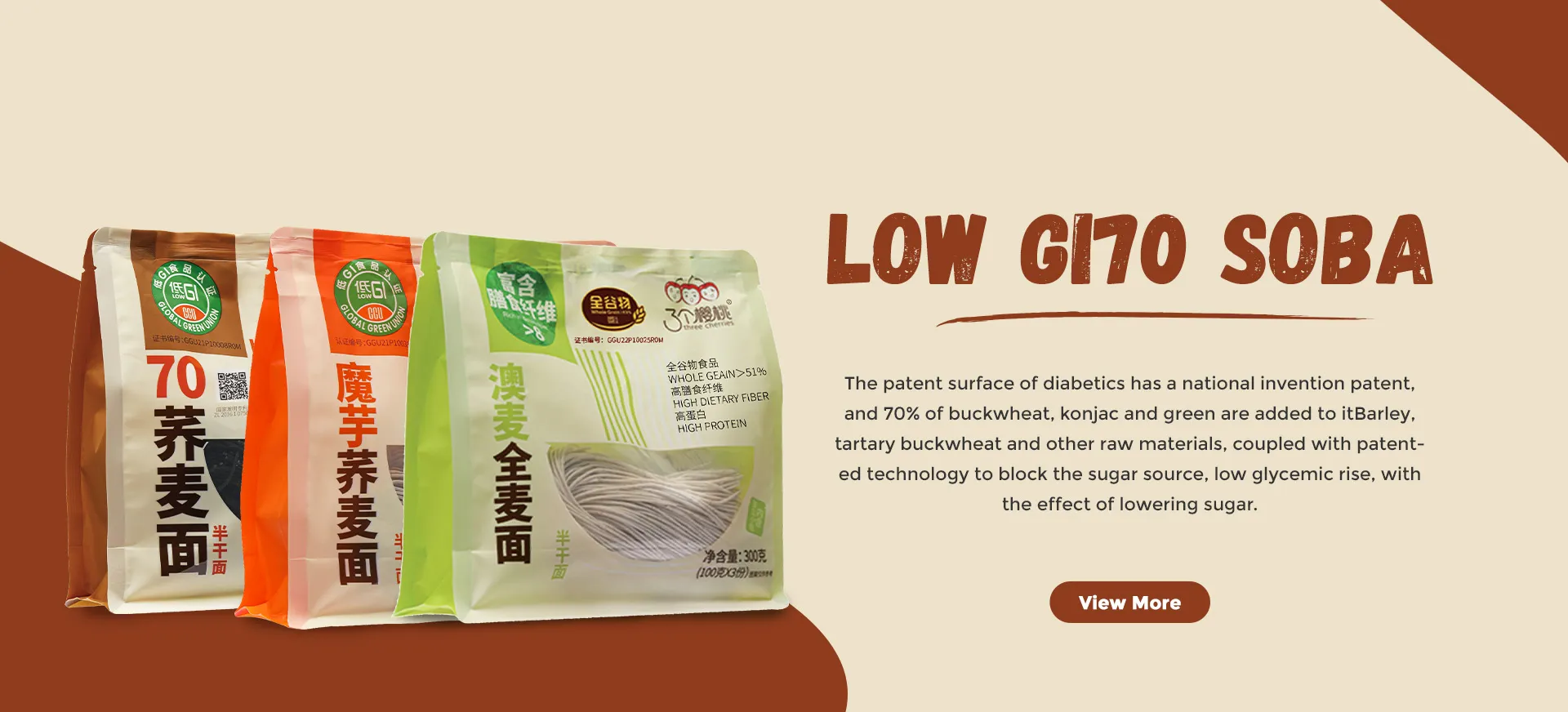what type of noodles are good for diabetics
The Best Types of Noodles for Diabetics
When it comes to managing diabetes, diet plays a crucial role in regulating blood sugar levels. Among the many food choices available, noodles are a popular staple in various cuisines around the world. However, not all noodles are created equal, especially for those dealing with diabetes. In this article, we will explore which types of noodles are better suited for diabetic diets, keeping in mind the importance of fiber, glycemic index, and nutritional value.
Understanding the Glycemic Index
The glycemic index (GI) is a system that ranks foods based on how they affect blood sugar levels. Foods with a high GI can cause rapid spikes in blood sugar, while those with a low GI help maintain stable levels. For individuals with diabetes, choosing low-GI foods is essential for managing glucose levels. Traditional wheat-based noodles typically have a moderate to high GI, making them less suitable for diabetics.
Whole Grain Noodles
Whole grain noodles are made from whole wheat flour, which retains the bran and germ of the grain. This means they are higher in fiber compared to their refined counterparts. The increased fiber content helps slow down digestion, leading to a gradual release of glucose into the bloodstream. Choosing whole grain pasta not only supports better blood sugar management but also contributes to a feeling of fullness, aiding in weight management.
Shirataki Noodles
Shirataki noodles, made from konjac yam, are an excellent option for diabetics. These noodles are extremely low in calories and carbohydrates, as they are primarily composed of water and a soluble fiber called glucomannan. Because of their minimal impact on blood sugar levels, they are often touted as a miracle food for people with diabetes. Shirataki noodles can be used in various dishes, absorbing the flavors of sauces and ingredients they are paired with.
what type of noodles are good for diabetics

Legume-Based Noodles
Noodles made from legumes, such as lentils, chickpeas, or black beans, provide a nutritious alternative for those with diabetes. These noodles typically have a lower GI compared to traditional wheat noodles, along with a higher protein and fiber content. The combination of protein and fiber helps stabilize blood sugar levels and promotes satiety. Moreover, legume-based noodles come packed with vitamins and minerals, making them a wholesome addition to any diabetic meal plan.
Zucchini Noodles (Zoodles)
For those looking to cut down on carbohydrates, zucchini noodles, or zoodles, are an excellent choice. They are made by spiralizing zucchini into noodle shapes and are naturally low in carbs and calories. Zoodles can easily replace traditional pasta in many recipes, allowing for creative and healthy meals. They're also rich in vitamins, minerals, and antioxidants, making them a nutritious choice without significantly impacting blood sugar levels.
Rice Noodles
Rice noodles can be an option, but it’s essential to choose brown rice noodles over white rice varieties. Brown rice noodles have a lower glycemic index and provide more fiber than their white counterparts. However, portion control is vital, as they can still contribute to higher blood sugar levels if consumed in large quantities.
Conclusion
In conclusion, when selecting noodles suitable for a diabetic diet, it is important to consider the type of noodle and its ingredients. Whole grain noodles, shirataki noodles, legume-based noodles, zucchini noodles, and brown rice noodles are all excellent choices that can help manage blood sugar levels while still allowing for delicious and satisfying meals. As always, moderation and balance are key, and incorporating these choices into a well-rounded diet will support overall health and well-being for those living with diabetes.
-
Unleash Your Inner Chef with Delectable Italian Pasta CreationsNewsAug.01,2025
-
Savor Health and Flavor: Irresistible Soba Noodles for Sale Await!NewsAug.01,2025
-
Nourish Your Body with Premium Organic Ramen - A Culinary Delight AwaitsNewsAug.01,2025
-
Elevate Your Dishes with Our Exquisite Kinds of Egg NoodlesNewsAug.01,2025
-
Dive into Flavorful Convenience with Our Ramen OfferingsNewsAug.01,2025
-
Discover Exquisite Types of Naengmyeon and Chilled Soba NoodlesNewsAug.01,2025
-
Is Whole Wheat Pasta Healthy?NewsMay.30,2025
Browse qua the following product new the we

















































































































